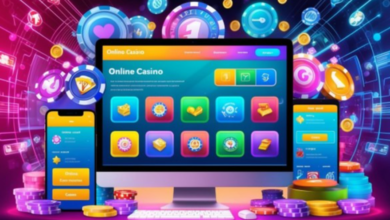Interactive Flat Panel Displays: Revolutionizing the Way We Engage with Technology

In the evolving landscape of technology, interactive flat panel displays have emerged as pivotal tools that transform the way we interact with digital content. These devices, blending advanced display technology with interactive capabilities, offer an array of applications across education, business, and beyond. This article delves into the features, benefits, and future of interactive flat panels display shedding light on how they are reshaping our interaction with digital environments.
Understanding Interactive Flat Panel Displays
Interactive flat panel displays are advanced screens that combine traditional display technology with touch-sensitive features, enabling users to engage directly with content through touch gestures, stylus inputs, or even voice commands. Unlike standard monitors or projectors, these panels offer a more immersive and intuitive experience, making them suitable for a wide range of applications.
At their core, interactive flat panels are high-definition displays that can function as giant touchscreens. They often incorporate technologies such as LED or LCD displays, multi-touch capabilities, and advanced connectivity options. This fusion of hardware and software creates a versatile platform for interaction, bridging the gap between traditional and digital media.
Key Features and Technologies
Touch Sensitivity: One of the standout features of interactive flat panels is their touch sensitivity. This allows users to interact directly with the display by tapping, swiping, or pinching, similar to how they would use a smartphone or tablet. The touchscreens can typically recognize multiple points of contact simultaneously, supporting collaborative work and group activities.
High Resolution: These panels often boast high-resolution displays, such as 4K or even 8K, ensuring that images and text are crisp and clear. This level of detail enhances readability and visual appeal, making them ideal for presentations, educational materials, and graphic design.
Multi-Touch Capabilities: Advanced interactive panels support multi-touch functionality, which means multiple users can interact with the display at once. This feature is particularly useful in educational settings where students can work together on the same project or in business meetings where multiple participants can contribute simultaneously.
Connectivity Options: Interactive flat panels are equipped with various connectivity options, including HDMI, USB, and wireless connections. This flexibility allows them to integrate seamlessly with other devices such as computers, tablets, and smartphones, making them versatile tools for a range of applications.
Embedded Software: Many interactive flat panels come with built-in software that enhances their functionality. This software often includes tools for annotation, screen recording, and collaboration, providing users with a comprehensive suite of features to maximize their productivity.
Applications Across Different Sectors
Interactive flat panel displays have found applications in numerous sectors, each benefiting from the unique capabilities of these devices.
1. Education
In educational settings, interactive flat panels are transforming traditional teaching methods. Teachers can use these panels to display interactive lessons, facilitate group discussions, and engage students with dynamic content. The ability to annotate directly on the screen and incorporate multimedia elements enhances the learning experience, making it more engaging and interactive. Additionally, the collaborative features of these panels allow students to work together on projects, fostering teamwork and problem-solving skills.
2. Business
In the business world, interactive flat panels are becoming essential tools for meetings and presentations. Their ability to display high-resolution content and support multi-touch interactions makes them ideal for brainstorming sessions, client presentations, and collaborative work. The integrated software often includes features for screen sharing and remote collaboration, enabling teams to work together efficiently regardless of their physical location.
3. Healthcare
In healthcare settings, interactive flat panels are used for various purposes, including medical training, patient education, and telemedicine. The high-resolution displays allow for detailed visualization of medical images, while the interactive features enable healthcare professionals to annotate and highlight important information. Additionally, these panels can be used for remote consultations, allowing specialists to interact with patients and colleagues from different locations.
4. Retail
Retail environments are also leveraging interactive flat panels to enhance customer experiences. These displays can be used for interactive kiosks, digital signage, and product demonstrations. By providing customers with interactive and engaging content, retailers can improve customer satisfaction and drive sales.
Advantages of Interactive Flat Panel Displays
The adoption of interactive flat panel displays comes with several advantages that contribute to their growing popularity:
Enhanced Engagement: The interactive nature of these panels encourages active participation from users, whether in a classroom, boardroom, or retail environment. This increased engagement can lead to better learning outcomes, more effective meetings, and improved customer experiences.
Versatility: Interactive flat panels are versatile tools that can be used for a variety of purposes, from teaching and presentations to interactive displays and digital signage. Their adaptability makes them valuable assets in different settings.
Ease of Use: With intuitive touch interfaces and user-friendly software, interactive flat panels are relatively easy to use. This simplicity ensures that users of all technical levels can interact with the display effectively, reducing the learning curve and increasing productivity.
Collaboration: The multi-touch capabilities of interactive flat panels facilitate collaboration among users. Whether working on a project, brainstorming ideas, or conducting a meeting, these panels enable multiple participants to contribute simultaneously, fostering a collaborative environment.
Future-Ready Technology: As technology continues to advance, interactive flat panels are evolving to incorporate new features and improvements. With ongoing developments in display technology, touch sensitivity, and connectivity, these panels are poised to remain relevant and effective in the future.
Challenges and Considerations
Despite their numerous advantages, interactive flat panel displays also present certain challenges and considerations:
Cost: High-quality interactive flat panels can be expensive, which may be a barrier for some organizations or educational institutions. However, the investment is often justified by the enhanced capabilities and benefits they provide.
Maintenance: Like any electronic device, interactive flat panels require regular maintenance to ensure optimal performance. This includes software updates, calibration, and occasional repairs, which can incur additional costs.
Integration: Integrating interactive flat panels with existing technology and infrastructure may pose challenges, especially in older systems. Ensuring compatibility and smooth integration requires careful planning and sometimes additional technical support.
Training: To fully utilize the capabilities of interactive flat panels, users may need training or support. While the interfaces are generally user-friendly, understanding and leveraging all the features may require some instruction.
The Future of Interactive Flat Panel Displays
Looking ahead, the future of interactive flat panel displays is promising, with several trends and advancements on the horizon:
Increased Interactivity: Future developments are likely to focus on enhancing interactivity, with more sophisticated touch and gesture recognition technologies. This will enable even more intuitive and immersive user experiences.
Integration with AI: Artificial intelligence (AI) is expected to play a significant role in the future of interactive flat panels. AI-driven features such as voice recognition, predictive analytics, and personalized content will further enhance the functionality and versatility of these devices.
Augmented and Virtual Reality: The integration of augmented reality (AR) and virtual reality (VR) technologies with interactive flat panels could open new possibilities for immersive experiences. These advancements could revolutionize how we interact with digital content and environments.
Sustainability: As sustainability becomes a growing concern, future interactive flat panels are likely to focus on eco-friendly materials and energy-efficient technologies. This shift will contribute to reducing the environmental impact of these devices.
Conclusion
Interactive flat panel displays represent a significant advancement in display technology, offering a dynamic and engaging way to interact with digital content. Their versatility, high resolution, and interactive features make them valuable tools across various sectors, from education and business to healthcare and retail. While challenges such as cost and integration exist, the benefits and potential of these devices far outweigh the drawbacks.
As technology continues to evolve, interactive flat panels will likely become even more advanced, incorporating new features and capabilities that further enhance user experiences. Whether used for teaching, collaboration, or customer engagement, these displays are set to play a crucial role in shaping the future of digital interaction.




